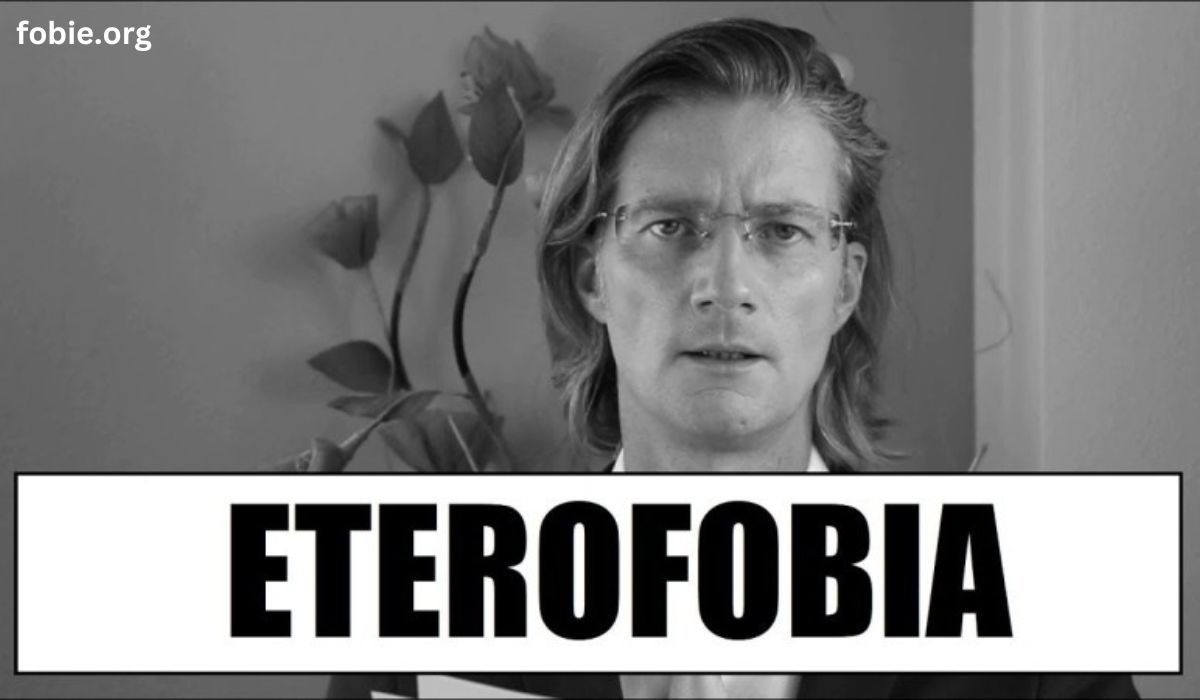Introduction
“Eterofobia” is a term derived from the Spanish and Italian languages, which translates to “heterophobia” in English. It refers to an aversion, prejudice, or discrimination against heterosexual individuals or heterosexuality. While the term is less common in everyday discourse compared to homophobia, it encapsulates a significant and nuanced social issue. This article aims to provide a comprehensive understanding of eterofobia, exploring its definitions, origins, sociological implications, psychological aspects, and its place in contemporary discourse.
Definition and Origins
What is Eterofobia?
Eterofobia is the irrational fear, hatred, or dislike of heterosexual people. It manifests in various forms, ranging from negative attitudes and prejudices to overt discrimination and exclusion of heterosexual individuals. Unlike homophobia, which has been extensively studied and widely recognized, eterofobia remains a relatively under-explored and controversial topic.
Etymology and Historical Context
The term “eterofobia” is derived from two Greek words: “heteros,” meaning “other” or “different,” and “phobos,” meaning “fear” or “aversion.” It mirrors the construction of “homophobia,” which denotes an aversion to homosexuality. Historically, eterofobia has not been a major focus of academic study or social activism, primarily because heterosexuality has been the dominant and normative sexual orientation in most societies.
Sociological Implications
Minority Stress and Identity Politics
Eterofobia can be examined through the lens of minority stress theory and identity politics. Minority stress theory posits that individuals belonging to marginalized groups experience additional stressors due to their minority status. In this context, heterosexual individuals, in environments where homosexuality is the norm or where heterosexuality is stigmatized, may experience stress and social exclusion.
Power Dynamics and Social Hierarchies
In most societies, heterosexuality holds a privileged position within the social hierarchy. This privilege often translates into greater social acceptance, legal rights, and access to resources. Eterofobia, therefore, can be seen as a reaction against this privilege and the power dynamics that sustain it. It challenges the assumption that heterosexuality should be the default or superior sexual orientation.
Psychological Aspects
Cognitive Dissonance and Social Identity
Eterofobia can be understood through the framework of cognitive dissonance and social identity theory. Cognitive dissonance occurs when individuals experience psychological discomfort due to holding conflicting beliefs or attitudes. For some people, this discomfort arises from the tension between their acceptance of diverse sexual orientations and the pervasive societal privileging of heterosexuality.
Social identity theory, on the other hand, suggests that individuals derive a sense of self from their group memberships. For those who identify strongly with non-heterosexual orientations, eterofobia may emerge as a way to affirm their identity and resist the dominance of heterosexual norms.
Prejudice and Discrimination
Prejudice against heterosexual individuals can manifest in various ways, including derogatory language, social exclusion, and unfair treatment. Discrimination may occur in both overt and subtle forms, such as biased hiring practices, negative stereotyping, or marginalization within LGBTQ+ communities. Understanding these dynamics is crucial for fostering inclusive environments that respect all sexual orientations.
Cultural Representations and Media
Depictions in Literature and Film
Eterofobia has been depicted in various forms of media, including literature, film, and television. These portrayals often explore the tension between different sexual orientations and highlight the challenges faced by individuals who do not conform to heterosexual norms. Analyzing these cultural representations can provide insights into societal attitudes towards heterosexuality and the complexities of sexual identity.
Media Influence and Public Perception
The media plays a significant role in shaping public perceptions of eterofobia. Positive representations of diverse sexual orientations can promote acceptance and understanding, while negative portrayals can reinforce stereotypes and prejudice. Examining the influence of media on public attitudes towards heterosexuality and eterofobia can help identify strategies for promoting inclusivity and reducing discrimination.
Contemporary Discourse
Eterofobia in the LGBTQ+ Community
Within the LGBTQ+ community, eterofobia can be a contentious issue. While some argue that it is a necessary response to the historical and ongoing marginalization of non-heterosexual individuals, others contend that it undermines the principles of equality and acceptance. This debate highlights the complexities of navigating social justice and inclusivity within diverse communities.
Legal and Policy Considerations
Addressing eterofobia from a legal and policy perspective involves balancing the rights and protections of all individuals, regardless of their sexual orientation. Anti-discrimination laws and policies should encompass protections against prejudice and bias towards heterosexual individuals while promoting equal rights for LGBTQ+ communities. Developing inclusive legal frameworks requires careful consideration of the diverse experiences and needs of all groups.
Conclusion
Eterofobia is a multifaceted and complex issue that intersects with various social, psychological, and cultural dynamics. Understanding eterofobia requires examining its definitions, origins, and implications within broader societal contexts. By exploring the sociological and psychological aspects of eterofobia, as well as its representation in media and contemporary discourse, we can gain a deeper understanding of the challenges and opportunities for promoting inclusivity and acceptance of all sexual orientations. In doing so, we contribute to the ongoing effort to create a more equitable and respectful society for everyone.











